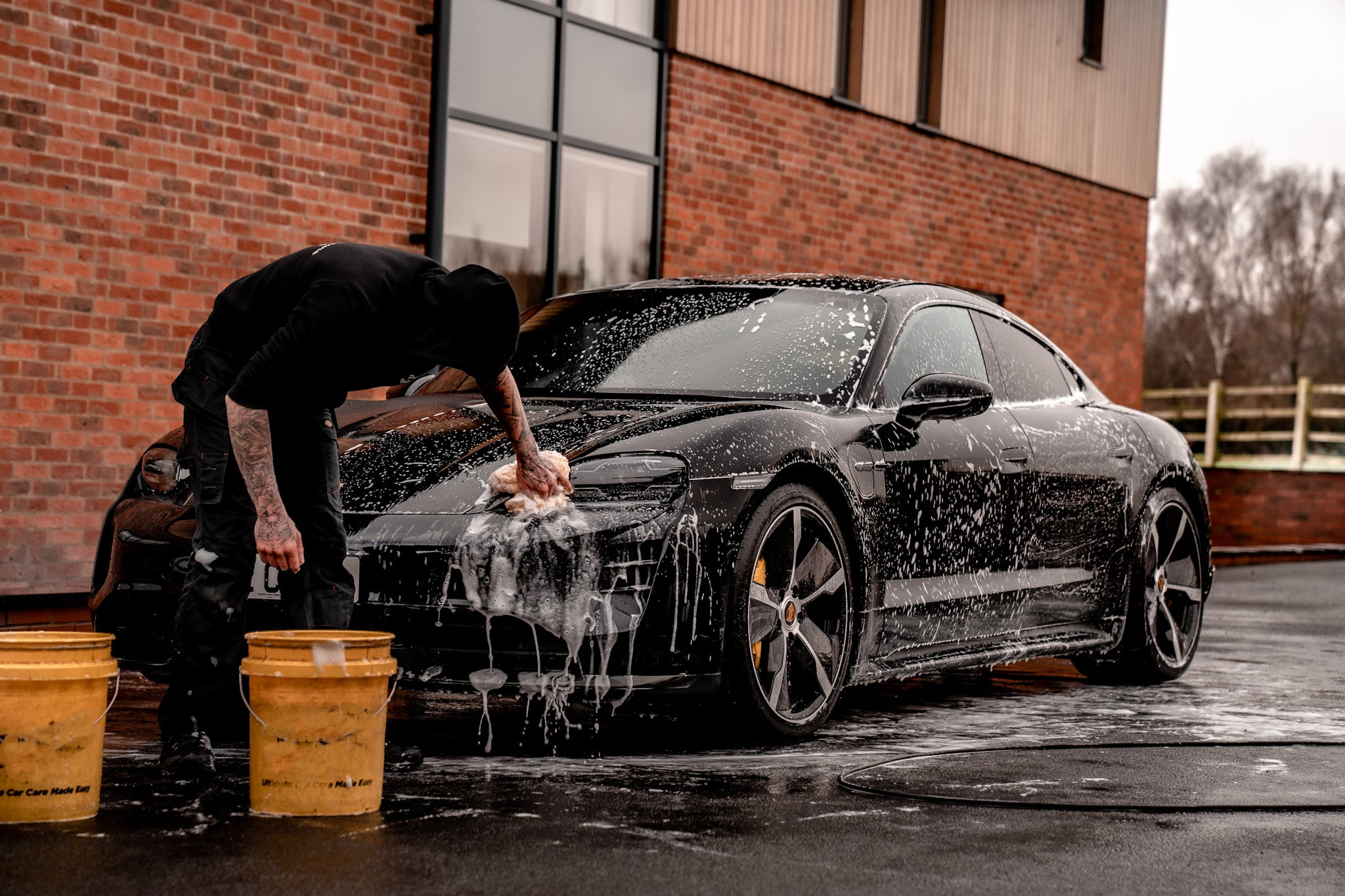Leading Ceramic Coatings San Jose Services for Automotive Excellence
Leading Ceramic Coatings San Jose Services for Automotive Excellence
Blog Article
Introducing the Scientific Research Behind Ceramic Coatings: How Does It Work and Why Is It Superior to Traditional Choices?
Ceramic coverings have actually been obtaining popularity in numerous sectors for their extraordinary efficiency and longevity. The science behind these coatings exceeds simple surface area protection, delving right into the elaborate chemistry that makes them stick out from typical alternatives (ceramic coatings san jose). Understanding how ceramic finishes work and why they outmatch conventional alternatives is crucial for those looking for to boost the long life and strength of their materials. So, exactly what sets ceramic finishes apart, and just how do they accomplish such exceptional results?
The Chemistry of Ceramic Coatings
In recognizing ceramic layers, delving right into the elaborate chemistry behind their composition is crucial for grasping their capability and longevity. Ceramic finishings are mainly made up of silicon dioxide (SiO2), which develops a safety and strong layer when applied to various surface areas. This chemical structure offers exceptional resistance to heat, chemicals, and corrosion, making ceramic finishes highly searched for for a vast array of applications.
The chemistry behind ceramic finishings involves the formation of covalent bonds in between silicon and oxygen atoms, producing a stiff network that improves the coating's durability and resilience. In addition, the presence of various other components such as titanium, aluminum, and zirconium further improves the layer's buildings, providing increased solidity and attachment to surface areas.
Recognizing the chemical composition of ceramic finishes enables for the modification of formulas to match certain requirements, whether it be for automobile, commercial, or residential functions. By using the power of chemistry, ceramic coatings remain to pave the method for premium defense and efficiency in numerous sectors.
Advantages of Ceramic Coatings

As an outcome, ceramic coatings make cleaning and preserving surface areas a lot easier and less lengthy. Generally, the multitude of benefits provided by ceramic finishes make them an exceptional alternative contrasted to conventional finish approaches.
How Ceramic Coatings Bond
Ceramic layers bond to surface areas via a procedure that includes molecular adhesion and chemical communications. When a ceramic finish is used to a surface, it forms a strong bond by chemically sticking to the surface at a molecular level.
Moreover, the chemical interactions between the ceramic finish and the surface further boost the bond. ceramic coatings san jose. These communications permit the ceramic finish to produce a continual and seamless layer on the surface, providing superb defense and toughness. Unlike standard finishings that may rest on the surface area without fully bonding, ceramic coatings develop a long-term bond that is resistant to chemicals, UV rays, and rough ecological conditions

In essence, the bonding device of ceramic layers makes sure a resilient and effective protective layer that outmatches standard covering alternatives. This remarkable bond adds to the resilience, scrape resistance, and durability of ceramic coatings, making them a recommended option for various applications.
Resilience of Ceramic Coatings
The remarkable long life of ceramic coatings stems from their robust molecular attachment and chemical interactions with surface areas, guaranteeing a sturdy protective layer that exceeds traditional finish alternatives. As soon as applied, ceramic finishes form a solid bond with the substratum, creating a durable obstacle versus various ecological stress factors such as UV radiation, chemicals, and abrasions. This bond is so protected that it can the original source stand up to the roughness of everyday usage without weakening or breaking down swiftly.
Unlike conventional finishings that may break down over time, ceramic finishings preserve their stability for an extended period, providing long-lasting defense for the underlying surface area. Overall, the remarkable toughness of ceramic layers makes them a superior selection for protecting a wide range of surfaces in various applications.
Ceramic Coatings Vs. Traditional Alternatives
In comparison to traditional coating methods, ceramic finishes supply a distinctive mix of resilience and protective capacities that establish them apart in various surface security applications. Typical options such as wax or sealants supply a short-lived layer of protection that can subside promptly, requiring regular reapplication. On the various other hand, ceramic coverings develop a solid bond with the surface, producing a permanent or semi-permanent barrier that is extremely immune to abrasion, chemicals, UV rays, and extreme temperatures.
Additionally, ceramic finishes use remarkable hydrophobic residential properties compared to conventional finishings. The hydrophobic nature of ceramic finishings causes water to bead up and roll off the surface area, bring dust and impurities with it. This self-cleaning effect aids to preserve the surface area's cleanliness and gloss for extended durations, decreasing the demand for constant maintenance.
Furthermore, ceramic coverings have a thicker layer compared to traditional choices, providing improved scratch resistance and protection versus minor influences. This durability makes certain durable efficiency and helps maintain the aesthetic allure of the treated surface area for a prolonged period.
Verdict
In final thought, the science behind ceramic finishes lies in their chemical composition and bonding homes, making them superior to standard options. The benefits of ceramic layers include raised longevity and protection for surface areas. By understanding exactly how ceramic finishes job and their advantages over typical options, one can make educated choices when considering finish choices for different applications.
Unlike typical coverings that might rest on the surface area without fully bonding, ceramic layers develop an irreversible bond that is immune to chemicals, UV rays, and extreme ecological problems.
The remarkable long life of ceramic coverings stems from their robust molecular bond and chemical communications with surface areas, ensuring a sturdy safety layer that goes beyond traditional finishing options.Unlike standard finishes that might degrade over time, ceramic finishes keep their honesty for an extensive i loved this duration, giving long-lasting defense for see the underlying surface.In contrast to traditional covering techniques, ceramic layers use a distinctive mix of durability and protective capabilities that set them apart in numerous surface protection applications. By understanding how ceramic coatings job and their benefits over standard alternatives, one can make enlightened choices when thinking about covering choices for various applications.
Report this page